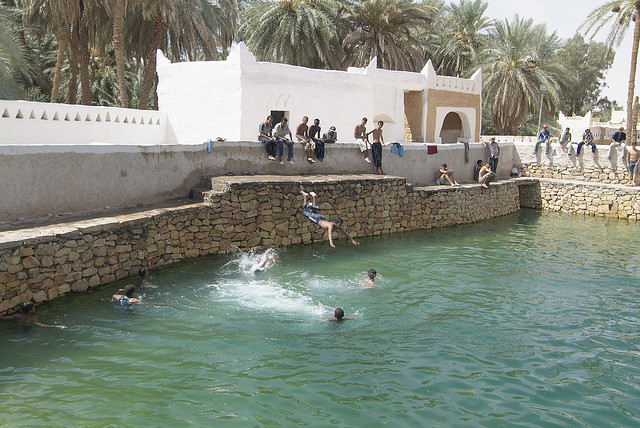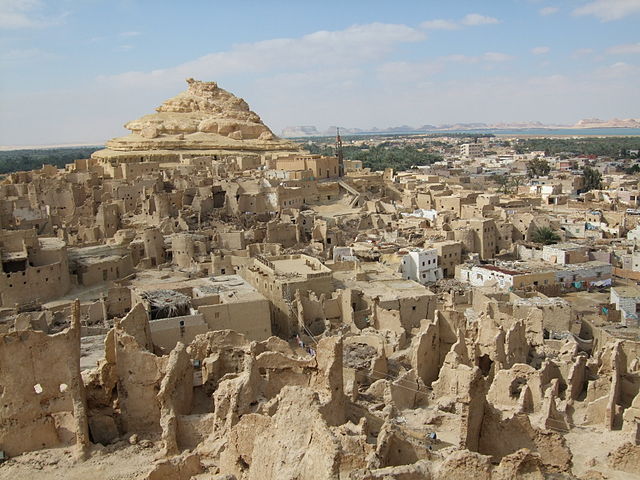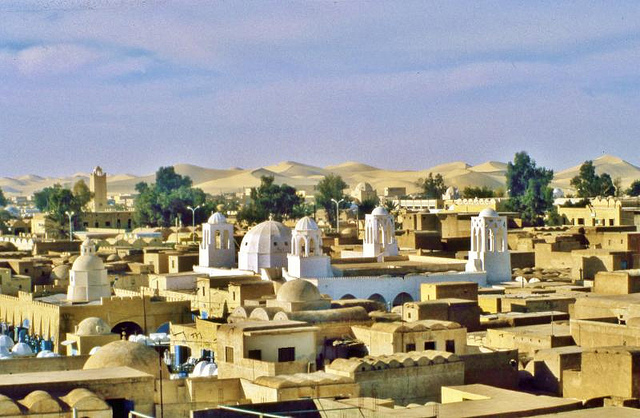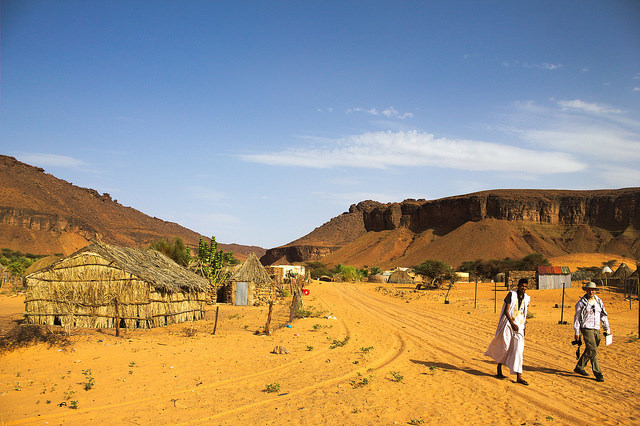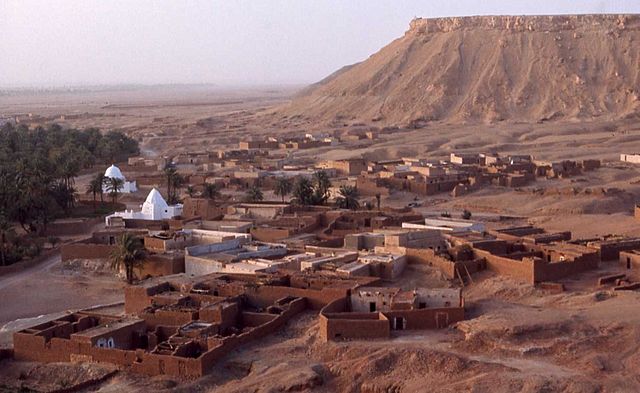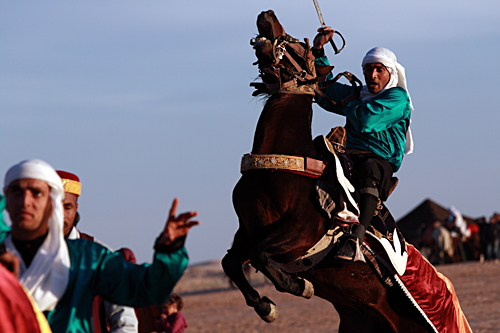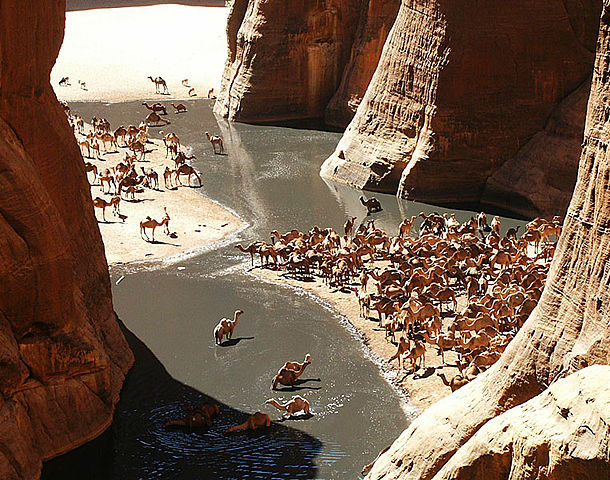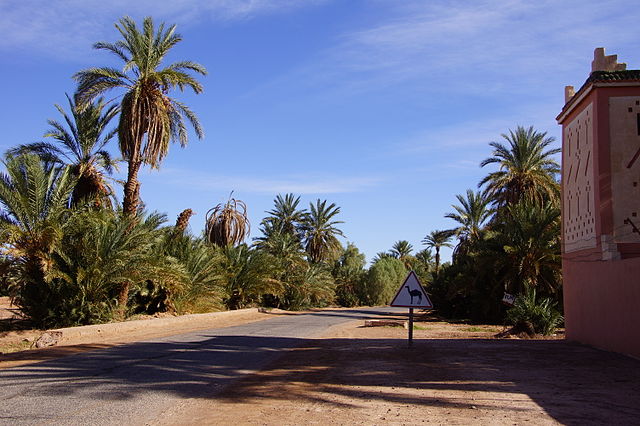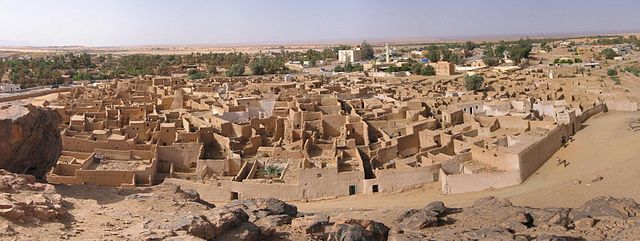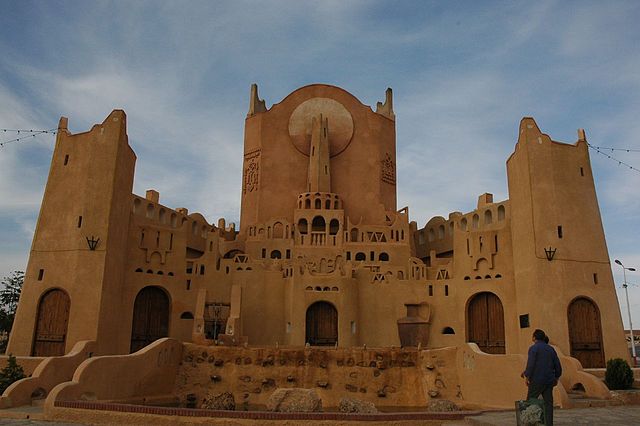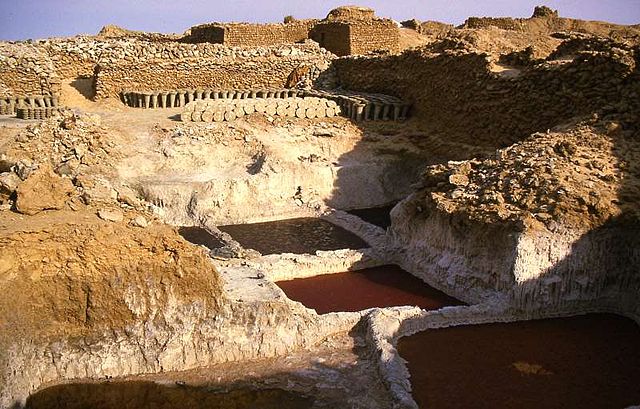The Sahara Desert. A veritable, endless ocean of sand. For many of us, the name “Sahara” conjures up images of oasis towns lined with palm trees rising out of the dunes like some sort of mirage. Well, this is true in some cases, but many oases offer much more. The residents of these towns have honed and carved a unique way of life from nothing but sand for centuries or longer. The architecture, water supply, culture, and agriculture are all quite different in oases than in non-desert town. This is true for oases in any desert, but we think the ones found in the Sahara are the most impressive. Here are 15 of the best.
1) Ghadames, Libya
Set in the Sahara near the triple border of Libya, Algeria, and Tunisia, Ghadames was the pre-eminent oasis town and one of Libya’s top tourist sites. White washed walls, groves of date palms, and a laid back solitude has preserved this peaceful outpost for nearly 2000 years. A UNESCO World Heritage Site, the instability of Libya in the past few years has all but halted travel to this fascinating and relaxing oasis.
2) Siwa, Egypt
Egypt is much much more than the pyramids and its ancient ruins. One of the most amazing places in Egypt is the Siwa Oasis, set between the Qattara Depression and the Egyptian Sand Sea. A place to experience traditional Egyptian culture if there ever was one, the crumbling town is stunning and there are plenty of opportunities to delve into desert culture through food, festivals, and visits to the surrounding dunes.
3) El Oued, Algeria
Known as the City of a Thousand Domes, this idyllic desert town is watered by an underground river which allows date palms to be grown and harvested. The water source also allows for brick construction of buildings, which is uncommon for the desert. The panorama of white domes, date palms, and the surrounding dunes conjures images of Arabian Nights from childhood for many.
4) Terjit, Mauritania
Near the border with Western Sahara lies the small village of Terjit, set on a dry plateau. A popular destination with Mauritania’s tourists, the site has been used for centuries for weddings, religious, and coronation ceremonies. Fed by a small stream from deep in the bedrock, there is a palm grove and the area provides an idyllic location to camp.
5) Timia, Niger
Deep in the vast expanses of northern Niger, you’ll find the small community of Timia. Sustained by a nearby guelta (low-lying rock basin that holds seasonal or year-round water), there is a seasonal waterfall and the remains of a French fort. Nearby are the ruins of Assode, once the most important town in the Tuareg trans-Saharan route in the area. Timia is also renowned for its fruit trees, a rare luxury in the desert.
6) Tinghir, Morocco
Nestled by the Middle Atlas Mountains and fed by a mountain river that passes through the nearby Todra Gorge, Tinghir is typical of Atlas communities, albeit exceptionally beautiful. Sustained by trade, agriculture, and tourism, Tinghir has changed little over the centuries and despite the increase in tourism in recent decades, will probably remain the same for many more.
7) El Golea, Algeria
Known as the gateway to the southern Sahara in Algeria, El Golea is located smack in the middle of Africa’s largest country. Home to Zenete Berbers, El Golea is just a few kilometers from the Grand Erg Occidental and some of the largest sand dunes in the desert. Agriculture is the main economic activity and there are estimates that the well-watered area has close to 200,000 palm trees.
8) Douz, Tunisia
Not to be outdone by its neighbor, Douz in southern Tunisia is likewise known as its country’s gateway to the Sahara and boasts an impressive 500,000 palm trees. A major producer of diglat noor dates, Douz hosts the International Festival of the Sahara every year, which celebrates traditional desert culture for four days and nights and features music, dance, poetry, horse races, and camel wrestling. Yes, you read that correctly.
9) Timbuktu, Mali
Once the center of trade, religion, and learning for all of West Africa, Timbuktu and its ancient mud buildings may not initially seem like an oasis in the traditional sense, but it may as well be. Set on the fringes of the great Sahara, Timbuktu was literally the first or last stop before a trans-Saharan journey. Now, a sleepy backwater, the town still has the allure of being at the end of the world for many visitors.
10) Guelta d’Archei, Chad
Set in the Tibesti Mountains of the far north of Chad, the area is about as remote as it gets. A critical watering hole for former trans-Saharan traders, the guelta now sustains all types of desert dwelling animals including camels and crocodiles, some of the last remaining in the Sahara. Used mostly by nomads now and the occasional tour group, the area was once a vast inland swamp as indicated by the numerous rock paintings in the area.
11) M’Hamid, Morocco
The tiny village of M’Hamid has seen more visitors than many other oases of its size (about 7,000 people). Mostly, because it is the terminus of civilization in eastern Morocco. From this point forward, you will find only massive sand dunes and the (closed) Algerian border. While its dusty alleys and crumbling buildings are slowly being replaced by newer ones, the village has several old Ksars, or fortifications that are of interest as well as the feeling of being at the end of the world, surrounded by desert.
12) Karima, Sudan
Another non-traditional oasis, Karima doesn’t quite fit the definition mostly because it is situated on the Nile River. Sudan has no natural oases because the Libyan Desert (which takes up most of the northern and western parts of the country) receives virtually no precipitation and has few if any artesian wells. Karima however, is home to date plantations, ruined riverboats abandoned in the Nile, the mountain of Jebel Berkal, and the ruins of Nubian pyramids. If ever there was a town that painted a more vivid façade of being an oasis, we haven’t seen it.
13) Ghat, Libya
Ghat has had a crucial standing in the annals of North African history. At various times, a trans-Saharan trade route, administrative center, Tuareg stronghold, city-state of the Garamanthian Empire, the ruins of an Italian fort during their colonial exploits in Africa are what define the town today. Rock paintings and engravings in the nearby mountains are a bonus which has drawn tourists for years, but sadly, instability has ground that to a halt.
14) Ghardaia, Algeria
Founded nearly 1000 years ago, Ghardaia is part of a confederation of five hilltop fortifications in north-central Algeria. Terraced arcades, painted buildings, and distinctive architecture all make Ghardaia appealing as an oasis destination. Date cultivation and a strong tradition of rug and textile weaving add to its Berber cultural identity.
15) Bilma, Niger
With temperatures routinely soaring into the 100s (40s C) six months out of the year, it’s a wonder anyone would live in the oasis settlement of Bilma in northeast Niger. One of the last Saharan caravan routes, Bilma still produces salt and natron through evaporation ponds in a tradition that dates back hundreds of years. Surrounded by nearby escarpments, dates are produced here like many other oases. A remote but substantial French military outpost was formerly built nearby.
Want to discover the finer side of Africa? Sign up for our weekly newsletter.
